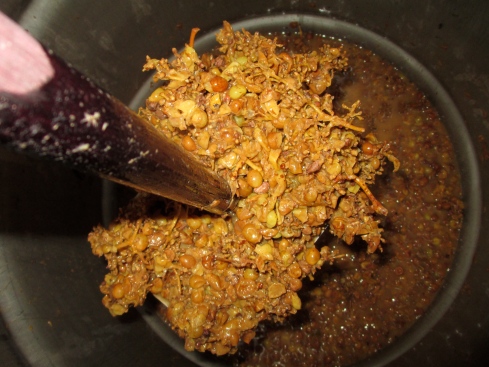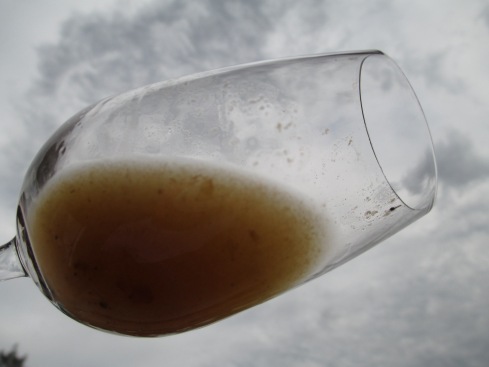Of Place And Time – The Future of Australian Wine
A guest post by thewineidealist:

In evolutionary biology, punctuated equilibrium theory states, ‘that most species once formed will exhibit little net evolutionary change for most of their geological history, remaining in an extended state of stasis.’ However, when a significant evolutionary change does occur, the theory proposes that it is generally restricted to a rare, but rapid event (on a geological time scale), where one species splits into two distinct species. As opposed to one species gradually transforming into another. This rapid change, or branching, is otherwise known as cladogenesis.
Similarly, wine exists on an ever changing continuum that has been going on for thousands of years. But, if you were to look, only, at a small, isolated section of this continuum you generally wouldn’t see much change happening at all. It is only with the 20/20 benefits of hindsight and historical observation that we are able to tell that something quite dramatic happened in a particular period of place and time.
In an earlier edition of The Wine Idealist, James Erskine, from Jauma wines in South Australia, said, “there’s not many places that are more exciting than Australia is right now, in terms of wine. The equilibrium goes and goes and goes and then suddenly, bang!, it gets punctuated and something changes. And it changes so hard and so fast that the rest of the world around it says, ‘what the fuck is going on?!’.”
A recent change has occurred within (and without) the Australian wine industry, which is unparalleled compared with the rest of the world. This change has been led by a passionate vanguard of young intuitive winegrowers and makers that are well trained and well travelled, who have seen, heard, tasted, and learned the ways of the Old World. – Unlike, in the New World’s old days, when flying winemakers from across Australia would arrive in dusty, mould riddled cellars in France, and elsewhere, armed with a Roseworthy degree in oenology, a bucket and a hose. – Today’s wine vanguardists recognise that the vineyard is, and has always been, king, not them and acknowledging this has led to an increased awareness in just how the fruits of their labours are being looked after, season after season.
This has resulted in Australian wine’s own punctuated equilibrium, whereby the extended state of stasis has suddenly split – ‘bang!’ – and branched off into whole new direction, namely the genus of natural, organic, and biodynamic wines. Or, perhaps more succinctly, artisanal wines.

Until recently, this new Australian wine equilibrium has been largely confined to the wineries, cellars and words of the wine industry’s growers, makers, communicators and sommeliers. From Sydney to Melbourne, Adelaide to Perth, a dedicated bevy of savvy sommeliers are listing Australia’s newly punctuated plonk – much to the grizzled troubles of some – and more and more ardent imbibers of juice from the fermented grape now enter these wine bars curious to know what lies beyond the glass.
“There’s certainly been an increase in the interest of the who, where, and how of a wine, for our customers,” says Thomas Hogan, sommelier and part-owner of Harry & Frankie, in Melbourne. “People seem genuinely interested in an experience that is more than just tasting, or drinking wine.”
This same sentiment is echoed by Travis Tausend from Cork Cafe andBrix (online) Wine Store, in Adelaide.
“The popularity of these types of wines extends to the general consumers that come into our wine cafe, or shop at our online store,” says Travis. “We buy these wines because we love them, but they also sell, repeatedly, so there must be people out there who are seeking these types of wines.”
For imbedded wine lovers, perhaps this new equilibrium has achieved equality, but as for the general (‘I picked up three bottles of sav blanc for twenty bucks at Uncle Dan’s the other day’) consumer, Perth sommelier, Jeremy Prus from Lalla Rookh, says no, not everyone has been brushed by this new branch, yet.
“The world of wine is already a big and overcomplicated universe to the general consumer,” says Jeremy, “which, isn’t to say that they’re not looking for new and exciting things, or that their hunger for knowledge about wine hasn’t increased. I guess in one sense, yes, the general consumer is looking to be challenged… but,” continues Jeremy, “do they know specifically what they’re looking for? I think the answer is no.”

In some ways, this new Australian wine equilibrium runs parallel with the paddock to plate and slow food movements that are happening all around the world, as a locally focussed consciousness raising occurs amongst consumers (read fellow humans) and their attitudes towards food changes. Today, more and more people want to know exactly where their food comes from, how it’s grown, and what’s in it. Wine, being a product of farming and agriculture, is not immune to this line of enquiry… but are drinkers asking the same questions of their wine, as they do for their food?
” I think the spotlight is definitely on those growers who choose to farm with these collective ideals and that is a very positive thing,” says Jeremy from Lalla Rookh, “but, we need more education on what natural, organic and biodynamic wines are, because a natural wine isn’t necessarily biodynamic or organic, or vice versa. There must be greater definition put on the producer and how they farm, and less on the style of wine produced to achieve this.”
In Adelaide, Travis from Cork and Brix thinks that there needs to be more communication to consumers about the viticultural and winemaking aspects of artisanal wines. And not just from writers or sommeliers.
“We often get questions,” explains Travis, “like, ‘oh is this wine cloudy because it’s organic?’, when the wine they are looking at is just unfiltered. It’s cloudiness is just a product of the winemaking, not the viticulture… We think that as these wines become more popular, and the labelling laws of wine come into line with food, consumers will have more information to better understand where the wines come from, how they were farmed and how they were made.”
Sydney sommelier and longtime champion of artisanal wines, Stuart Knox, from Fix St James, thinks that it’s more a question of the amount of time available to a sommelier, or writer to communicate, sometimes, very complicated messages about this shift in Australian tastes for winegrowing.
“We all have only a very small window of opportunity to communicate with consumers, be it column inches or table side chats,” explains Stuart, “and it’s hard to do more than scratch the surface, but hopefully that scratch will turn into an itch for someone who wants to know more about these types of wines.”
In that respect, perhaps it is, ultimately, up to the producers who make these types of wines to communicate their message in a bottle. Many of these passionate vanguardists already do so, by voluntarily labelling their wines with an ingredients list, attending events and festivals that support and showcase these types of wines, and telling their stories, every day, on social media.

“We like to think about the stories surrounding our favourite bottles,” says Travis from Cork and Brix. “Social media has given us greater access to the story’s surrounding wine, the viticulture and the winemaking, and so therefore, as consumers, we can make more informed decisions when it comes to wine and why we are choosing to drink it.”
Like any sommelier worth their salt, Thomas from Harry & Frankie, and Stuart from Fix St James places a great emphasis on communicating a particular wine’s story to their customers, but, the wine always has to taste good, first and foremost, before they’re willing to make any recommendations.
“An important part of the Harry & Frankie experience is conveying the story and philosophies of these wines and their producers,” says Thomas. “It’s pretty simple, really. Know who makes your wine, know where it comes from, know how he or she makes it and why they make it that way, but above all else make sure it’s bloody delicious.”
“Taste is and should always be the driving force as to a wine’s appreciation,” explains Stuart. “However, with these wines there is a story of passion that goes along with them, and that passion can give people an enhanced factor of enjoyment in the wines.”

Taste. Story. Sustainability. This is the new paradigm and the future for Australian wine. The trade has been witnessing this shift, first hand, for at least the last five years, and right now, we are witnessing the very beginnings of this new age of natural, organic, biodynamic, sustainable, artisanal, call it whatever you like, types of wine, where general consumers are wanting to know more, whether via fad or fashion, or a genuine concern for what’s in their glass. Thanks to the rise in direct communication from various social media platforms, and the slow dismantling of traditional gatekeepers in the old media, fans of a ferment, natural or otherwise, are far more knowledgeable, informed and engaged with wine, today, than they’ve ever been before.
It is the responsibility of anyone involved, directly or indirectly, to effectively and definitively communicate to their fans, friends, and family the story behind these wines, who made them and how, and most importantly, why you love drinking them. Otherwise, confusion will continue, organic will be mistaken for natural, natural will be mistaken for biodynamic, and all other combinations in between. And, when confusion reigns, unscrupulous people will step into the void and exploit the moment, which is exactly what happened when disco destroyed funk, pop destroyed punk, and people like Rick Astley, Peter Andre, and Pitbull have their own special synapse embedded in your brain that fires and reminds you of who they are, whenever their names get mentioned, instead of many of those early creators and pioneers of their respective genres.
Natural, organic, biodynamic, sustainable, or artisanal are not marketing buzzwords, but the stories they can formulate, when told with truth and authenticity, can and will continue to propel this new Australian wine paradigm further into the realms of the conscious consumer, and will potentially make for some fruitful times ahead.
